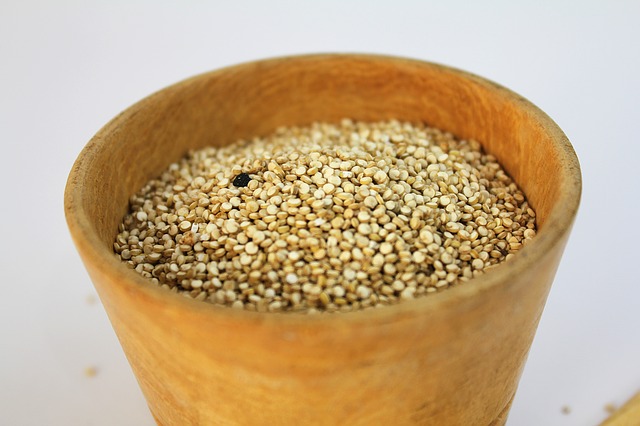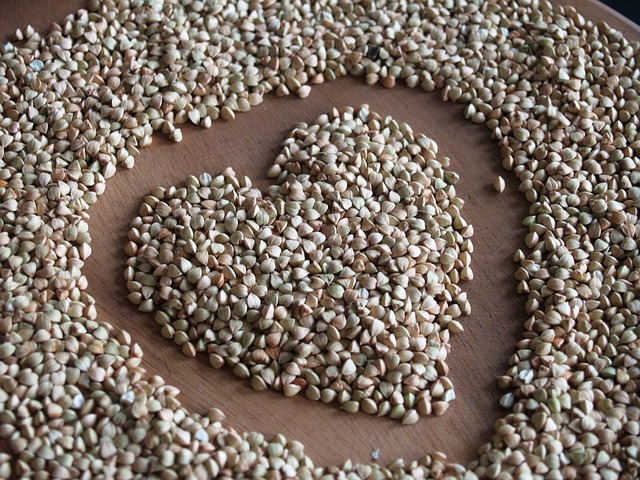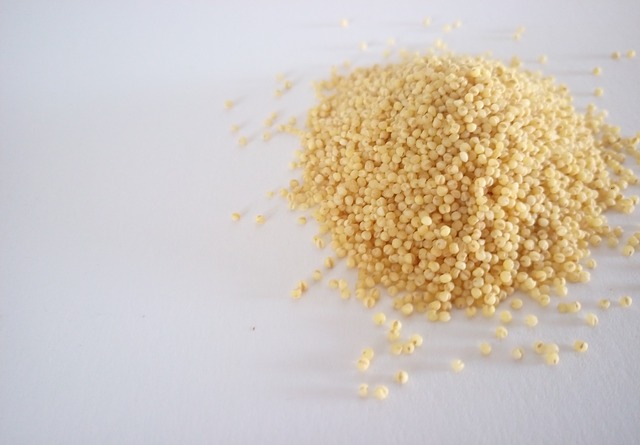Ancient grains are sprouting up everywhere. So, what are ancient grains and why are they all the rage? Well, unlike modern grains that are bred for higher yield and drought resistance, these are the “old world” grains, the ones that have remained virtually unchanged for thousands of years.
Ancient grains are abundant in protein, fiber, and minerals, offering excellent nutritional benefits. Contrary to some inflammation causing major grains, research suggests that some ancient grains even contain anti-inflammatory properties.

If you’re ready for a blast from the past join me as we explore the health benefits, and how to cook these wonderfully nutritious old world grains.
We will be focusing in particular on five varieties of ancient grains, all of which are also considered pseudo grains – with the exception of millet, which although not technically classified, for all intensive purposes fits the bill. These are seeds and grasses most commonly categorized as grains.
The beauty of all five of these grains is that they are gluten free, alkaline forming, low glycemic carbohydrates that are easy to digest, assimilate, and absorb.
Amaranth
What it is: A staple of the Aztecs and Mayans, it has been grown for thousands of years – becoming domesticated 8,000 years ago. The grain is tiny with a pleasant nutty flavor and combines well with other grains.
Health benefits: High in protein, the amino acid lysine for tissue growth and repair, calcium, magnesium, potassium, iron, vitamins A, C, and E. Contains cholesterol lowering properties.

How to cook it: 1 cup amaranth to 3 cups boiling water, reduce heat, cover and simmer for 20-30 minutes, stirring occasionally. 20 minutes usually makes a creamy porridge that’s delicious when topped with fresh berries and a drizzle of maple syrup. Bake into breads to add texture and flavor. It can also be popped, like corn.
Fun fact: There are about 4,000 of these tiny kernels per teaspoon of amaranth.
Buckwheat
What it is: Native of Central Asia, originally cultivated in China and other Eastern countries from the tenth through thirteenth centuries and taken to Europe by the Crusaders, it’s a staple food in Eastern Europe and Russia. Contrary to the name it contains no wheat, and is actually a fruit seed related to rhubarb and sorrel. The groats are round, moderate in size, and have a hearty, slightly crunchy and chewy texture.
Health benefits: High quality complete protein containing all essential amino acids, particularly high in lysine for tissue growth and repair. Rich in vitamin E, B vitamins, and minerals. Contains high amounts of flavonoids and phytonutrients helping to balance, and lower cholesterol levels. Extra high in soluble fiber, which slows glucose absorption, and controls blood sugar. Helps with mental clarity and balancing moods.

How to cook it: Rinse first. 1 cup buckwheat groats to 2 cups water, bring to a boil, reduce heat, cover and simmer 10-15 minutes. Add to salads, veggies, and soups with your favorite seasonings. Makes a great hot breakfast cereal topped with coconut oil, honey, almond butter, or berries. For a quick breakfast on the go try my overnight buckwheat groats. The flour is a great whole grain and gluten free alternative to use in baked goods, and pancakes, like these banana buckwheat chia muffins.
Fun fact: When bees collect the nectar of the buckwheat flower the results are a stronger tasting and darker colored honey.
Millet
What it is: Hailing from North Africa, originating more than 4,000 years ago from a wild west African grass, and a staple food in Africa, China, Russia, and India – millet has mostly been used as bird seed in America. The seeds are small, round, relatively soft, and have a mild flavor.
Health benefits: High in protein, fiber, magnesium, potassium, and B vitamins. Contains silica for healthy bones, and connective tissues, including hair, skin, and nails. Soothing for indigestion or morning sickness, supports kidneys and stomach, is an anti-fungal good for candida, and can reduce sugar cravings.

How to cook it: Rinse first. 1 cup millet to 2 1/4 cups water, bring to boil, reduce heat, cover and simmer 20-30 minutes. For a more nutty flavor, first toast the dry millet in a skillet over medium heat until golden, rinse well, and then add water and cook. Makes a nutritious breakfast porridge, add to salads and soups, and use ground millet in baked goods.
Fun fact: Together, the Chinese signs “millet” and “mouth” make the word “harmony”.
Important note: Millet is considered a goitrogenic and should not be overconsumed by people with thyroid issues.
Quinoa
What it is: Pronounced keen-wah, native to South America and honored by the ancient Incans as the “mother seed”, and prized for it’s ability to provide strength and stamina as the “the gold of the Aztecs.” Also highly valued as a source of nutrition for nursing mothers.
A seed from a plant related to the beet, chard, and spinach plants, it comes in a variety of colors – red, orange, pink, purple, black, or the most commonly used transparent yellow. It has a delicate, subtle nutty flavor, and a fluffy, creamy, slightly crunchy texture.
Health benefits: Complete amino acid rich protein, high in fiber, better source of iron than other whole grains, high in calcium, and an ideal food for endurance. Recent research found that individuals with Celiac disease experienced improved intestinal tract health and decreased total cholesterol after eating 50 grams of quinoa daily for six weeks.

How to cook it: Quinoa contains a naturally occurring bitter coating called saponin so rinse well. 1 cup quinoa to 2 cups water, bring to a boil, reduce heat, cover and simmer 15-20 minutes. Add veggies, herbs, and vinaigrette or seasoning for a delicious salad, add to veggie soups or chilis, and serve as a breakfast porridge.
Fun fact: Quinoa faced extinction when the Spanish banned cultivation of it as a means of subjugation, in a failed attempt to destroy the South American Andes natives and their culture. Breaking the ban resulted in the severe penalty of death.
Teff
What it is: Originating in Ethiopia, a staple particularly in a traditional fermented flat bread known as injera. Teff comes in a variety of colors, with ivory or brown being the most common, and has a mild, slightly sweet flavor.
Health benefits: Contains iron, high amounts of vitamin C, calcium (1 cup contains 123 mg) higher than any other grain, protein, and a particular type of fiber that is showing much promise in the areas of blood sugar control, colon health, and weight management.
How to cook it: 1 cup teff to 3 cups boiling water, reduce heat, cover and simmer for 15-20 minutes, stirring occasionally. Serve topped with fruit, and add cooked grains into baked goods.
Fun fact: Teff is fairly resistant to various plant diseases making it a low pesticide grain.
For savory dishes you can also use vegetable or chicken broth instead of water to add more flavor. If you haven’t already, I encourage you to try one or more of these great grains and experience the multitude of health benefits these nutrient dense whole foods have to offer. You may find them to be an excellent new addition to your kitchen repertoire :)

I read your article about Essential Grains. You explain a very valuable point which is the essential nutrients that are found in the ancient grains. This is indeed a very valuable point. After reading your article about the different grains that are healthy for the body, I am considering the idea of changing my diet plan. I really gained a valuable knowledge from your post.
Thanks for your comment, Shivaram! I’m so glad you learned some valuable nutritional information about ancient grains, and hope that you will give them a try :)
Very intriguing article Jess! I feel like I am well educated on ancient grains now. It sounds so much better than the average grains we are used to eating.
I do have a couple of questions for you. Can you purchase ancient grains in common everyday grocery stores? Also, I read you can eat this for breakfast topped with your favorite topping, will this be a fulfilling meal for you?
Thanks
Hi Akeim! They really do way in so much better than most of the newer types of grains on the scale of nutrient density. Plus my digestive system tolerates them so much better, I’m not on a gluten-free diet but I feel so much better without the gluten.
Quinoa and buckwheat are fairly easy to find in most common large chain grocery stores, the others not so much. You can find them at Whole Foods, or other health food markets (many times in bulk too) although my favorite is to order online from Vitacost. They have an amazing selection of healthy grocery items and you just can’t beat their prices plus they ship super fast. They’re pretty much my “one-stop shop” for everything from groceries to body care to cleaning supplies :) Amazon is another option, both can be found on my shop page. Take care, and enjoy your journey into ancient grains :)
I love quinoa, but it’s great to be reminded that it’s not the only ancient grain under the sun! Thanks for this thorough examination of ancient grains. I’m excited to go shopping next!
I haven’t heard much about teff, so I appreciate that you’ve included it here. Is it very easy to find in health food stores?
For sure Samantha! I know, I eat quite a bit of quinoa so it’s nice to switch it up a bit :) Bob’s Red Mill has teff that can be found in many health food stores. Not too sure if you’ll have as much luck finding it in bulk. If not, I order all my stuff through Vitacost. Enjoy your ancient grains and let me know if you experiment with something new :)